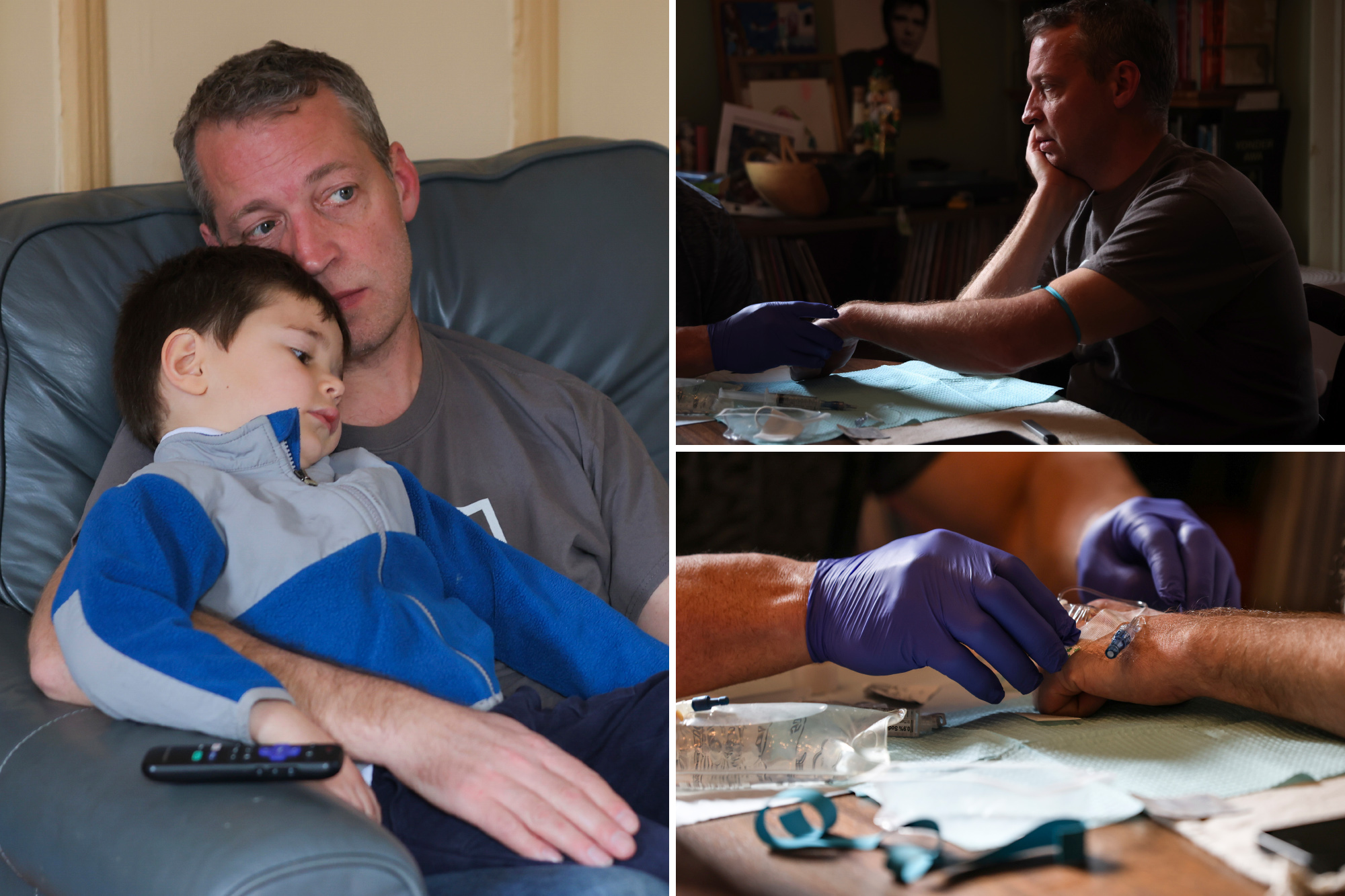
An experimental treatment seems to delay Alzheimer’s symptoms in some people genetically intended to get the disease in the 40s or 50s, according to new findings from ongoing research, now captured in the trump administration financing delays.
Early results – a scientific first – were published on Wednesday even when study participants worried that politics could shorten their access to a possible salvation.
“It is still a study, but it has given me an extension in my life that I have never been banished,” Jake Heinrichs from New York City said.
Now 50 years old, Heinrichs has been treated in that study for more than a decade and remains without symptoms, despite inheriting the Alzheimer’s gene that caused his father and brother about the same age.
If the blocked fund stops the doses of Heinrichs, “How long do we have?” asked his wife, Rachel Chavkin. “This trial is life.”
Two drugs sold in the US can modestly slow down the early phase Alzheimer’s deterioration by cleaning the brain of one of its signs, an adhesive gunk called amyloid.
But so far, there have been no allusions that remove the amyloid much earlier – many years before the first symptoms appear – it can simply push the disease.
Research led by the University of Washington in St. Louis includes families that go through rare gene mutations almost guaranteeing that they will develop symptoms at the same age that their affected relatives have made – information that helps scientists show if treatments have any effect.
The new findings center in a sub -branch of 22 participants who took medicines removing longer amiloids, on average eight years.
Long -term removal of long -term amyloids shorten half their risk of initiating symptoms, researchers reported Wednesday in Lancet Neurology magazine.
Despite the small size of the study, “incredible is very important,” said Northwestern University neuroscientist David Gate, who was not involved in the research.
Now the participants have been passed by an early experimental drug in Leqembi, an IV treatment approved in the US, to try to answer the other obvious question.
“What we want to determine over the next five years is how strong the protection is,” said Dr. Randall Bateman of the University of Washington, who runs the Alzheimer’s studies network inherited mainly from families with these rare genes. “Will they ever get the symptoms of Alzheimer’s disease if we continue to treat them?”
Here is the concern: Bateman gathered money to start that confirmation study as he requested the National Health Fund Institutes for the full project, but his grant was delayed after the required reviews were canceled. An example of how millions of dollars in research are stalled while Nih is caught with funding restrictions and mass fires.
At the same time, researchers ask if NIH will shift concentration away from amyloid research after comments by Dr. Jay Bhattacharya, appointed as the new director of the agency.
“One of the reasons I think we have made no progress in Alzheimer’s, as much as we should have, because NIH did not support a fairly wide range of hypotheses,” Bhattacharya senators told one who brought an example of science early behavior without associating with current research.
Scientists do not know exactly what causes Alzheimer’s, a disease that destroys the mind affecting nearly 7 million Americans, mostly late in life. What is clear is that silent changes occur in the brain at least two decades before the first symptoms – and that the adhesive amyloid is a major contributor.
At one point, amyloid construction seems to cause a protein called Tau to begin the killing of neurons, which directs the cognitive decline.
Tau fighting drugs are now being tested.
Researchers are also studying other factors, including inflammation, brain immune cells and certain viruses.
NIH’s focus expanded while researchers found more potential guilty.
In 2013, the NIH National Institute for aging funded 14 rehearsals of Alzheimer’s possible medicines, over a third of the amyloid.
Until last fall, there were 68 drug rehearsals, and about 18% targeted amyloid.
The Northwesterni gate counts itself among scientists who “think the amyloid is not everything” but said nothing has depreciated the amyloid hypothesis.
Recently he used brain tissue preserved by an old amyloid study to learn how immune cells called microglia can clear those plates and then pass to help the brain recover, possible data on the improvement of today’s modest therapies.
For now, the amyloid is clearly implicated somewhat and families with the genes that cause Alzheimer’s are helping the answer to a critical question to anyone at risk: Can the amyloid construction block really remove from symptoms?
Without NIH funds, Bateman said, that opportunity will be lost.
“Absolutely absolutely crazy,” said long -standing study participant, June Ward, who lives near Asheville, North Carolina and plans to ask friends to complain before lawmakers.
Ward turns 64 in June and is healthy, two years older than when her mother’s symptoms appeared.
“It is exciting to think about the possibility that Alzheimer’s disease is not what takes me,” she said.
In New York, Heinrichs said he hoped his 3-year-old son would not “experience the stress and grief I lived as a young man to see my father fade.”
“We need Nih not to be politicized,” he added Chavkin, his wife. “It is just to keep people alive or helping them live better. And in this case, it’s helping my husband survive.”
#Researchers #find #hint #delay #Alzheimers #symptoms
Image Source : nypost.com